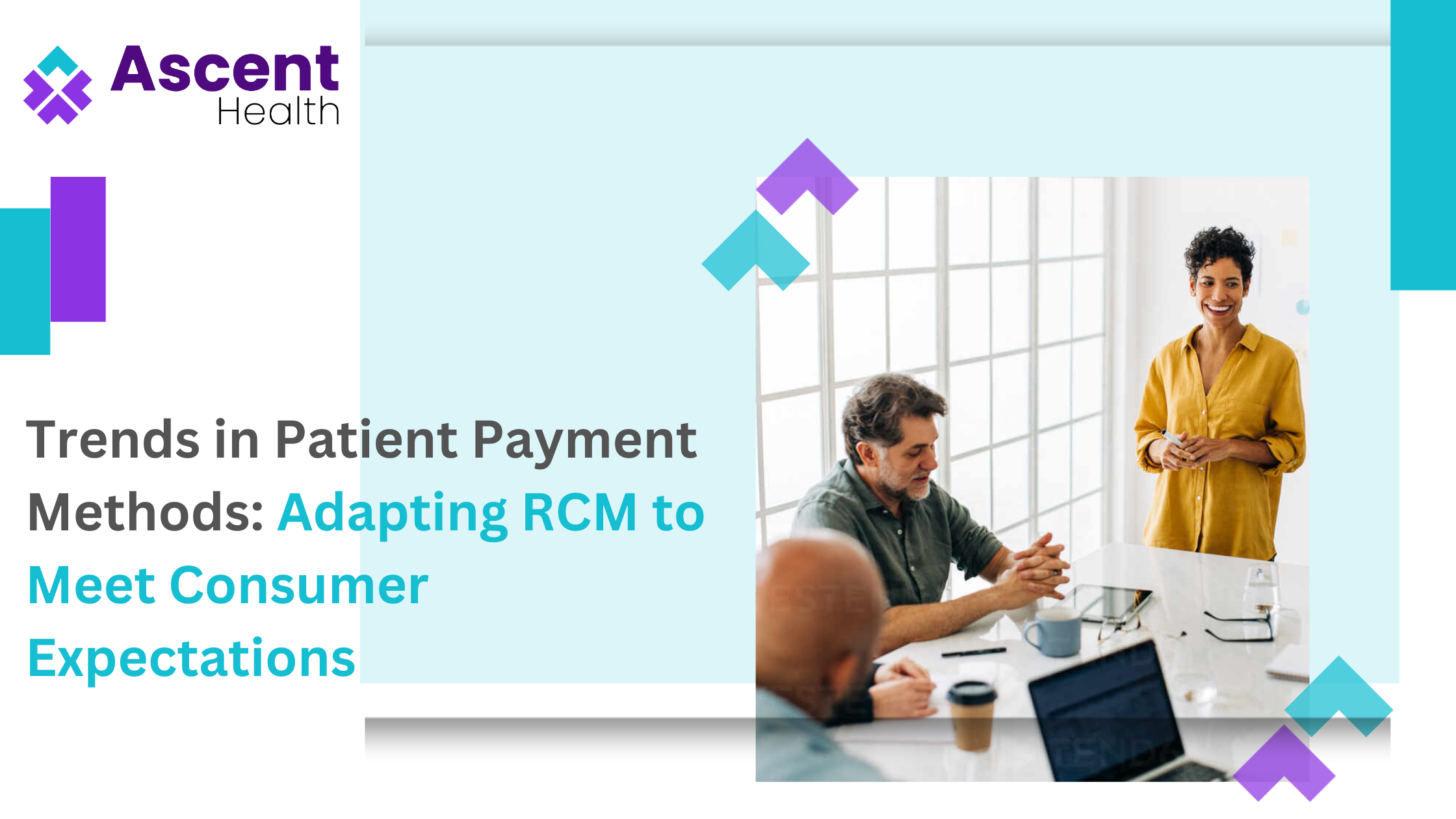
Have you ever been stuck behind someone fumbling through a wallet full of cash and coupons at the checkout? It’s a scene straight out of a sitcom, but it highlights a significant shift in our world: convenience is king, especially when it comes to how we pay for things. In the healthcare industry, this shift is dramatically reshaping patient payment methods, pushing Revenue Cycle Management (RCM) companies USA to adapt and meet evolving consumer expectations. Let’s dive into these trends, peppered with some personal anecdotes and insights, to see how RCM and patient access services are rising to the occasion.
Hooking You In: A Personal Tale
Let’s kick things off with a little story. A few months ago, I found myself in the hospital—don’t worry, it was just a minor mishap involving a ladder, a cat, and a misguided attempt to hang holiday lights. As I was being discharged, I expected the usual bureaucratic rigmarole of healthcare payments. Instead, to my pleasant surprise, the nurse handed me a tablet. I could review my bill, choose my payment method, and even set up a payment plan, all in the comfort of my hospital bed. This seamless experience got me thinking about how far we’ve come and what it means for the future of patient payments.
The Shift in Patient Payment Preferences
In today’s fast-paced world, patients expect the same level of convenience and efficiency from their healthcare providers as they do from their favorite online retailers. This shift is driving several key trends in patient payment methods:
1. Digital Payments and Portals
Gone are the days when paying a medical bill meant writing a check or calling a billing office. Patients now prefer digital payment methods that offer convenience and flexibility. Online payment portals allow patients to view and pay their bills anytime, anywhere. These portals often come with features like payment reminders, e-statements, and the ability to set up automatic payments.
2. Mobile Payment Solutions
Mobile payments are skyrocketing in popularity. Think about how often you use your phone to pay for coffee or groceries. Healthcare is catching up, with many providers now offering mobile payment options. Apps that integrate with healthcare systems enable patients to pay bills, manage accounts, and even communicate with billing departments directly from their smartphones.
The Role of RCM Companies USA
RCM companies USA are at the forefront of these changes, helping healthcare providers implement and manage new payment methods. These companies bring a wealth of expertise and technology to the table, ensuring that the transition to modern payment systems is smooth and efficient.
1. Integration of Advanced Technologies
RCM companies are integrating advanced technologies such as AI and machine learning to streamline billing processes. These technologies can predict patient payment behaviors, identify potential issues before they become problems, and automate routine tasks, freeing up staff to focus on more complex issues.
2. Enhanced Patient Access Services
Patient access services are evolving to support these new payment methods. By improving the initial patient experience, from scheduling and registration to insurance verification, healthcare providers can ensure a smoother billing process down the line. Efficient patient access services mean fewer errors and delays, leading to quicker payments and improved patient satisfaction.
Detailed Examples and Relatable Scenarios
Let’s consider the example of a large healthcare system in Texas that recently revamped its payment process with the help of an RCM company. They introduced an online portal and mobile app that allowed patients to view their bills, set up payment plans, and even chat with customer service representatives. The results were impressive: patient satisfaction scores soared, and the rate of on-time payments increased by 25%.
Or take the case of a small clinic in California that started using mobile payment options. Patients appreciated the convenience, and the clinic saw a 30% reduction in the time spent on billing inquiries. These real-world examples highlight the tangible benefits of adapting to new payment trends.
The Human Touch: Balancing Technology and Personal Interaction
While technology is crucial, maintaining a human touch is equally important. Patients value personalized communication and the ability to talk to a real person when they have questions or concerns about their bills. Here are a few ways to balance technology with personal interaction:
-
Customer Service Hotlines: Ensure that patients can easily reach a customer service representative if they need assistance. This human connection can make a significant difference in patient satisfaction.
-
Educational Resources: Provide patients with clear, easy-to-understand information about their payment options. Educational videos, FAQs, and detailed guides can help demystify the billing process.
-
Feedback Mechanisms: Encourage patients to provide feedback on their payment experiences. Use this feedback to continually improve services and address any pain points.
Conclusion: Embracing the Future
As the healthcare industry continues to evolve, adapting to new patient payment methods is essential for both financial health and patient satisfaction. By embracing digital payments, mobile solutions, and the expertise of RCM companies USA, healthcare providers can meet and exceed consumer expectations.
So, what’s your healthcare payment experience been like? Have you noticed any changes in the way you pay for medical services? Share your thoughts and stories in the comments below. Let’s keep this conversation going and explore how we can all benefit from these exciting trends in patient payment methods.
In the end, it’s all about making healthcare more accessible, efficient, and patient-friendly—one payment at a time. And hey, if it saves us all from fumbling with cash and coupons at the checkout, I’d say that’s a win for everyone!






